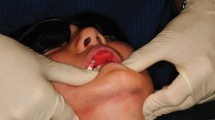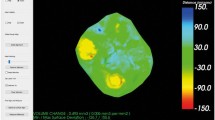Abstract
For patients affected by tooth wear who require treatment to restore their dentition, the methods chosen can increasingly involve digital technology, with potentially less use of traditional, analogue treatment methods. Digital technology has transformed clinical photography and dental radiology, and is now available for most of the stages required for managing these patients. Continuous development of these digital technologies, both in the system capability and in the clinician interface, has brought the digital workflow within reach of more clinicians and therefore, for the treatment of more patients. While it is recognised that the comprehensive use of digital technologies is currently most likely to be used in clinical practice by specialist and private practitioners, it is expected that interest in and understanding of digital workflows will increase throughout the dental profession.
This paper provides a step-by-step overview of the digital workflow, for both simple and complex cases.
Key points
Recognises the use of digital technology in tooth wear management.
Identifies the treatment workflow involved in digital dentistry.
Understands the advantages of the virtual patient.
This is a preview of subscription content, access via your institution
Access options
Subscribe to this journal
Receive 24 print issues and online access
$259.00 per year
only $10.79 per issue
Buy this article
- Purchase on Springer Link
- Instant access to full article PDF
Prices may be subject to local taxes which are calculated during checkout












Similar content being viewed by others
References
Coachman C, Paravina R D. Digitally Enhanced Esthetic Dentistry - From Treatment Planning to Quality Control. J Esthet Restor Dent 2016; DOI: 10.1111/jerd.12205.
Lee J D, Nguyen O, Lin Y-C et al. Facial Scanners in Dentistry: An Overview. Prosthesis 2022; 4: 664-678.
McLaren E A, Garber D A, Figueira J. The Photoshop Smile Design technique (part 1): digital dental photography. Compend Contin Educ Dent 2013; 34: 772-776.
Calamita M, Coachman C, Sesma N, Kois J. Occlusal vertical dimension: treatment planning decisions and management considerations. Int J Esthet Dent 2019; 14: 166-181.
Radu M, Radu D, Abboud M. Digital recording of a conventionally determined centric relation: a technique using an intraoral scanner. J Prosthet Dent 2020; 123: 228-231.
Chiu C S, Clark R K. Reproducibility of natural head position. J Dent 1991; 19: 130-131.
Amezua X, Iturrate M, Garikano X, Solaberrieta E. Analysis of the influence of the facial scanning method on the transfer accuracy of a maxillary digital scan to a 3D face scan for a virtual facebow technique: An in vitro study. J Prosthet Dent 2022; 128: 1024-1031.
Lepidi L, Galli M, Mastrangelo F et al. Virtual Articulators and Virtual Mounting Procedures: Where Do We Stand? J Prosthodont 2021; 30: 24-35.
Revilla-León M, Agustín-Panadero R, Zeitler J M et al. Differences in maxillomandibular relationship recorded at centric relation when using a conventional method, four intraoral scanners, and a jaw tracking system: A clinical study. J Prosthet Dent 2023; DOI: 10.1016/j.prosdent.2022.12.007.
Kois J C, Kois D E, Zeitler J M, Martin J. Digital to Analog Facially Generated Interchangeable Facebow Transfer: Capturing a Standardized Reference Position. J Prosthodont 2021; 31: 13-22.
Silverman M M. Accurate measurement of vertical dimension by phonetics and the speaking centric space: Part two. Dent Dig 1951; 57: 308-311.
Afrashtehfar K I, Alnakeb N A, Assery M K M. Accuracy of intraoral scanners versus traditional impressions: A rapid umbrella review. J Evid Based Dent Pract 2022; 22: 101719.
Kong L, Li Y, Liu Z. Digital versus conventional full-arch impressions in linear and 3D accuracy: a systematic review and meta-analysis of in vivo studies. Clin Oral Investig 2022; 26: 5625-5642.
Basson E, Kerstein R, Radke J. Ability to Correctly Select High Force Occlusal Contacts from Articulating Paper Markings. Adv Dent Tech 2020; 2: 101-110.
Author information
Authors and Affiliations
Corresponding author
Ethics declarations
The author declares no conflicts of interest.
Written consent to publish has been obtained from those photographed in Figures 2, 5 and 12.
Rights and permissions
About this article
Cite this article
Yar, R. Digital workflows for the management of tooth wear. Br Dent J 234, 427–431 (2023). https://doi.org/10.1038/s41415-023-5657-4
Received:
Revised:
Accepted:
Published:
Issue Date:
DOI: https://doi.org/10.1038/s41415-023-5657-4



